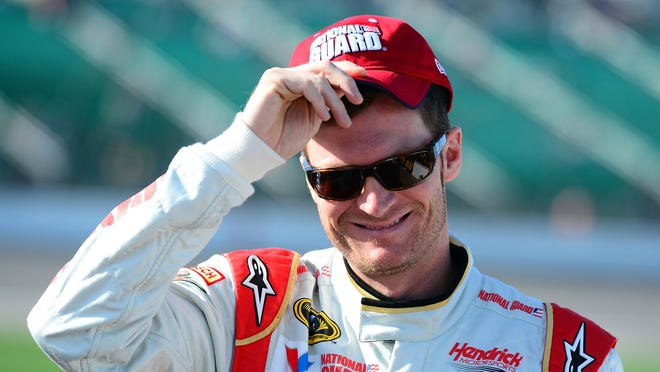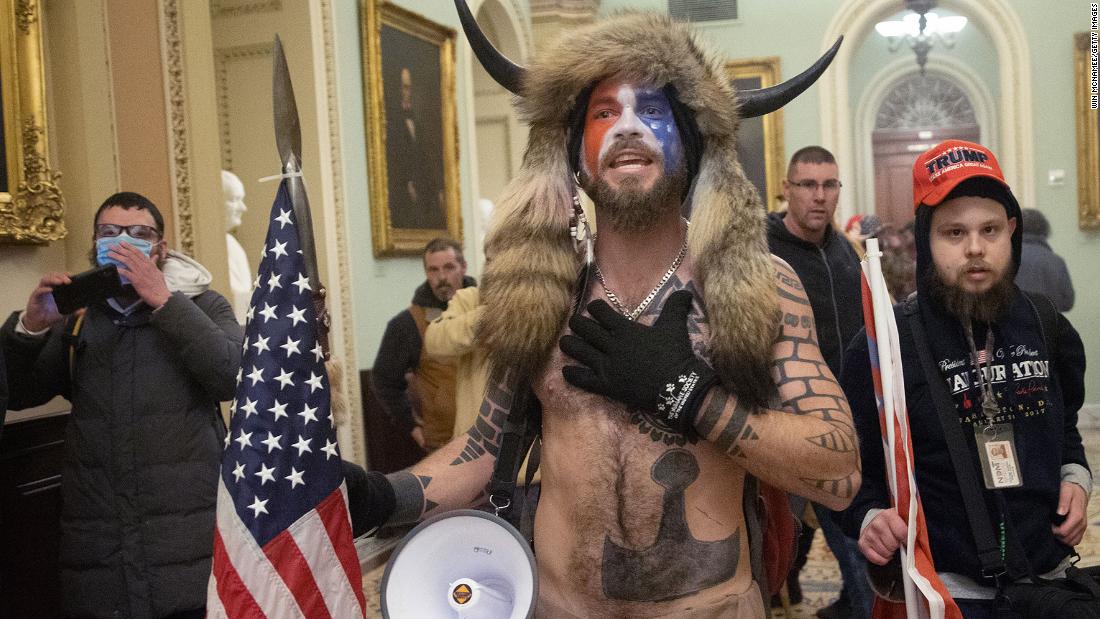Dale Earnhardt Jr. reflects on 2001 Daytona 500 and father’s death
Dale Earnhardt Jr. says your complete 2001 NASCAR racing season takes residence in a closely fogged space of his reminiscence due to his father’s death within the season-opening Daytona 500.
“I don’t remember much about that year,” Earnhardt stated in an unique interview with the Daytona Beach News-Journal. “It was just very heavy, very weighty; cloudy and it was a dark mood.”
His father’s race crew, Dale Earnhardt Inc., had reached a brand new excessive as Michael Waltrip received the 2001 Daytona 500 and was adopted throughout the end line by 26-year-old Earnhardt Jr.
Yet that definitive excessive would quickly flip into the final word despair after Earnhardt Sr. hit the skin, concrete retaining wall in Turn 4, sparking a mass pileup which value the seven-time NASCAR champion his life.
Instead of celebrating his teammate’s triumph, Earnhardt Jr. was whisked to Halifax Health Medical Center, the place he realized the destiny of his father, the primary and solely driver ever to undergo deadly accidents in stock-car racing’s most prestigious occasion.
Earnhardt’s death not solely despatched the nation into mourning — his photograph appeared on the quilt of Time journal that week — however sparked quite a few investigations and eventual security improvements.
THE INTIMIDATOR:A quick look at Earnhardt Sr.’s legendary career

Earnhardt’s death wasn’t a one-day occasion. NASCAR’s personal research of the crash lasted by the summer time and finally led to a bunch of enhancements.
“Dad was sort of this invincible phenomenon that turned out to be human like the rest of us,” Earnhardt Jr. stated. “People never imagined in a million years that he would be somebody we would lose. When that became a reality, that was a giant wakeup call for the sport.”
To NASCAR’s credit score, no different driver has perished in a racing wreck since Earnhardt’s death.
Through all of it, Dale Earnhardt Jr. tried to maintain his head within the sport throughout the 2001 season and stored racing after the dreadful day that turned often called NASCAR’s “Black Sunday.”
“That year was like a nasty, nauseous hangover of a time,” he stated. “I don’t mean the hangover was from drinking. I mean the overall mood was dark. I was hurting. Everybody was sad.
“We all knew we had to keep going but none of us were really ready or wanting to do that. We just did. We went through the motions. We put one foot in front of the other and kept going forward in one direction. That brought us to the racetrack almost each weekend where we felt the most comfortable. We were around our industry and our family.”
OPINION:Anniversaries don’t mark a time to recall Dale Earnhardt
EARNHARDT SR.’s FINAL RACE:He kept this Bible verse in his car
Once the 2001 season was carried out, Earnhardt Jr. stated he took refuge in hard-party mode.
“I came out of that year and started to raise a little more hell, started to party a little bit more with my friends,” he stated. “I didn’t want to be alone. I always wanted to have some people around. I wanted company. I wanted friends.
“I wanted things to be happy and be light. I pursued that for several years and about run myself into the ground because we raised so much hell from partying so much.
“We had a regiment. There were certain nights of the week we were going to party and see the sun come up.”
No Daytona grudge
Dale Earnhardt misplaced his life at Daytona International Speedway and his son knew that he must come to phrases with the long-lasting racing facility.
“I went back to Daytona that July, 2001, and I knew if I was going to keep racing, I was going to have to get OK with Daytona,” Earnhardt Jr. stated. “If I was going to keep going in the sport for years and years, I didn’t want to be showing up at Daytona and be miserable and hating it, and holding it responsible for everything that happened.”
He arrived in Daytona Beach a number of days earlier than the then-named Pepsi 400 with the hopes of reconciling with the high-banked tri-oval. He introduced a number of buddies alongside for assist.
It was a weighty second for the game’s hottest driver.
“We walked around Turns 3 and 4 where dad was killed,” he stated. “I got out of the car, stood on the ground, looked at the track, and just sort of thought — not about anything in particular — I just stood there and took in some air and let the moment sort of marinate a little bit.”
What occurred subsequent was the stuff of fairytales.
After a number of days of “goofing off” on the seashore, Earnhardt Jr. arrived again at Daytona for racing obligation. In three begins previous to the summer time race at Daytona, his common end was twenty sixth.
After just some follow laps in his No. 8 DEI Chevrolet, Earnhardt Jr. realized he had a “super-fast race car.”
He led 116 out of 160 laps and beat Waltrip again to the checkered flag by a scant one-tenth of a second, which set off a wild celebration not solely within the grandstands however within the storage space.
“At that point I said, ‘All right. I’m good with Daytona. Me and Daytona are not going to have a problem going forward,’ ” he stated.
He would wind up a two-time Daytona 500 winner. The first was in 2004 driving for DEI. The second was in 2014 wheeling the No. 88 Hendrick Motorsports Chevrolet.
As time handed, Earnhardt Jr. gained a brand new appreciation of the Speedway, constructed on a shoestring funds and opened in 1959 by NASCAR co-founder Bill France Sr., due to its excessive standing in stock-car racing historical past.
“I love the history of the sport so much, and Daytona is like the original block of the foundation,” he stated. “Daytona, Darlington and a few other tracks are really what this sport was built on.
“So much amazing history and great races and triumphs that happened at Daytona. I chose to focus on that and really appreciate the racetrack for what it really, truly is. That wasn’t that hard of a thing to do. It almost made me and Daytona closer.”
Earnhardt Jr. retired as a full-time NASCAR Cup Series driver following the 2017 season. He maintains a gradual work schedule that features co-ownership of JR Motorsports, racing analyst for NBC, and a podcast host along with a number of different enterprise endeavors.
Now 46 and married with two kids, Earnhardt Jr. is a very completely different particular person from that 20-something social gathering animal 20 years in the past.
He credit the transformation to his spouse.
“I ended up meeting Amy and she spent about a decade trying to turn me around and straighten me out,” he stated with fun. “Luckily for me, she’s a dedicated woman and stuck with it.”
Safety revolution
Dale Earnhardt Jr. agreed that his father’s death led NASCAR to fast-track safety measures. For instance, by October 2001, head-and-neck security units (extra generally often called HANS) had been obligatory gear for drivers.
Soon after, NASCAR made a number of modifications to the cockpit, together with shock-absorbing seats, headrests, extra padding and extra steel tubing within the roll cage.
NASCAR additionally required all its nationwide sequence tracks to put in metal and foam vitality discount (SAFER) limitations, which absorbs the blow from a vicious, high-speed hit.
Earnhardt’s death occurred on the heels of one in all NASCAR’s worst seasons of driver fatalities. During the 2000 season, the game misplaced Adam Petty (grandson of Richard Petty), Kenny Irwin and Tony Roper.
NASCAR Chairman Bill France Jr. was all the time fast to level out that the game was taking steps to enhance security earlier than Earnhardt’s death. But there isn’t any doubt the tragic lack of one the game’s most recognizable stars motivated the sanctioning physique to quicken the tempo of security analysis and improvement.
POST 2001:Safety advancements are wide-ranging, still evolving
CHANGES: 5 steps NASCAR has taken to make the sport safer
“I feel that the sport losing its biggest superstar absolutely sent safety innovation into overdrive, and a lot of amazing innovation and creativity and development started happening and a lot of brilliant people brought new technology into the sport that helped a lot of drivers,” Earnhardt Jr. stated.
“When somebody tells me, ‘You know, your dad’s death really made the sport safer for a lot of other people.’ I agree — but I also couple, connect and tether that to the doctors and scientists and engineers who helped develop HANS devices and SAFER barriers and those sorts of things.
“Dad couldn’t have made that himself. He didn’t spark this sort of revolution on his own. There were other deaths, too. Adam Petty’s death was a tragic loss for our sport. The Petty family is as big as the Earnhardt family in NASCAR.
“For them to lose their next generation — and we all saw Adam’s trajectory was up; he was going to be what Chase Elliott is today — and that was taken away from all of us.
“There was a lot of deaths in that period of time and I think dad’s (death) was the last domino that made NASCAR think ‘We might need to fast-track some new safety innovation into this sport to stop what is happening.’ It was a combination of a lot of things.”
ELLIOTT:Excited to ‘keep pushing’ as he defends his Cup championship
Earnhardt’s legacy
Dale Earnhardt received seven NASCAR Cup Series championships and turned one thing of a superhero to blue collar households.
He dropped out of highschool and began with nothing then constructed a racing empire as he embraced “The Intimidator” model.
But his legacy within the sport is security. His death led to considerate security modifications, which has probably saved numerous lives, together with that of Ryan Newman.
Newman escaped serious injury in last year’s Daytona 500 after his automotive went the other way up and absorbed a high-speed hit on the motive force’s aspect on the final lap of the race. The veteran racer spent a number of days at Halifax earlier than being escorted out of the hospital holding the arms of his two younger daughters.
NEWMAN:His Daytona 500 crash, like Earnhardt’s, forced safety upgrades
BUBBA WALLACE:Reflects on reaching his ‘breaking point’
“Ryan’s accident absolutely would have turned out differently had that accident happened just a handful of years before,” Earnhardt Jr. stated. “We’ve come a long way in safety innovation, but I also think we will look at today’s race car years from now and think ‘How did we ever race that? It looks so unsafe.’
“I think what NASCAR has learned is that safety is always a work in progress and it’s never finished. There’s no perfect cockpit, seat belts, headrests. I think we have so much more to learn and we can do better.
“I think if we keep that same attitude — that we need to continue to strive to improve safety — we can’t step back and say ‘I think we got it.’ We need to keep looking at what we have and say ‘This isn’t good enough. There’s more we can do. There is more to learn and understand. We can make this better.’
“Hopefully, it doesn’t take another death for us to realize why we didn’t think of that. We have continued to drive safety forward for the last 20 years after dad’s death, so the momentum is still there.”
Godwin Kelly, longtime motorsports editor for the News-Journal, retired on Dec. 1, 2020.




